Three Simple Nose Work Games to Play With Your Dog
Looking for an easy way to keep your dog busy? Do you want an activity for your dog that’s both fun and mentally stimulating? A great place to start is with some simple nose work games.
Nose work games are easy to play, can be done indoors, and are very enjoyable for dogs. And best part is the only thing you need to get started is some yummy treats.
Here’s how to teach your dog the basics of nose work, and three easy nose work games to get you started.
The Benefits of Nose Work Games For Dogs
Nose work & scent games offer your dog a fun way to use their natural talents. Even though a dog’s sense of smell is more than 10,000 times more powerful than our own they still rely on visuals, especially in familiar environments such as your home. Nose work games can help your dog hone in on their natural sniffing abilities, and it’s a great way to keep them entertained and mentally stimulated.
The benefits of teaching your dog nose work include:
- Fun way to give your dog more mental stimulation
- Gives your dog extra physical stimulation
- Nose work builds your dog’s confidence
- Gives your dog a job to do
- Easy way to bond with your dog
- Nose work is fun & rewarding for dogs
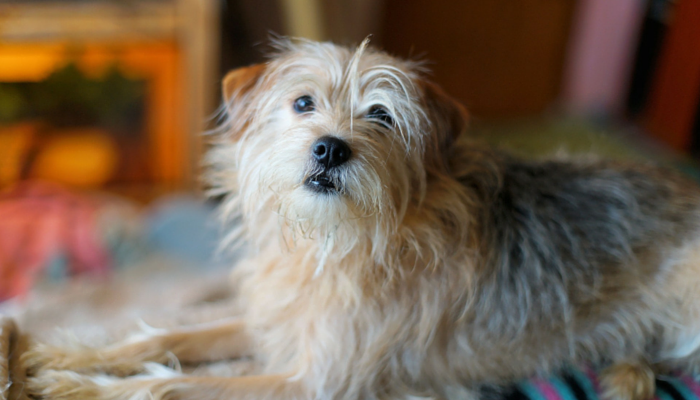
Teaching your dog a few nose work games is a simple way to help keep them busy & entertained.
Nose Work Is Simple to Train & Can Benefit All Dog Owners
If you’re looking for an easy way to keep your dog entertained on a rainy day nose work games are the perfect choice. Dogs love having a job to do, something to keep their minds busy.
With nose work you’re using your dog’s natural talent in a constructive way to keep them mentally stimulated. The “find it” or “seek” command can be one of the most versatile and fun games you can teach you dog.
Dogs have been bred to work alongside us; teaching them to use their natural talent of smell keeps them happy and entertained. It gives them a feeling of purpose. Dogs thrive when they feel like they have a job to do; and it’s even better when it’s something as simple as teaching them to sniff things out for you.
Remember a tired dog is a well behaved dog. Keeping them mentally and physically fit is your responsibility. Give your dog a purpose by teaching him to sniff things out for you; dogs thrive when they’re given a job. Nose work is an easy example that anyone can do in their own home.
One of the best things about teaching a dog some basic nose work is that their never too young or old to learn; it’s a great activity for any dog given they have the proper motivation. And of course there’s the bonus of not having to go out and buy any special equipment – it can be done anywhere with something as simple as kibble.
Choosing the Right Treats or Toys for Nose Work
To entice your dog to search you’ll need something enticing. I often use carrots, snap peas, popcorn or some of her favorite toys. I lucked out with Laika – she’s both play and food motivated. When it comes to nose work she’ll enthusiastically search for her some regular old kibble – not all dogs will be so willing.
If your dog is pickier than mine choose his favorite toy or treat to begin. People often use really high value treats such as sliced up meat or one of your dogs favorite treats they don’t get very often. I’ve had luck with using treats that smell different in highly distracting environments. That little extra ‘whoa what is that smell’ can help keep your dog focused.
You know your dog best – choosing one of their favorite rewards will help them focus when learning a new skill.
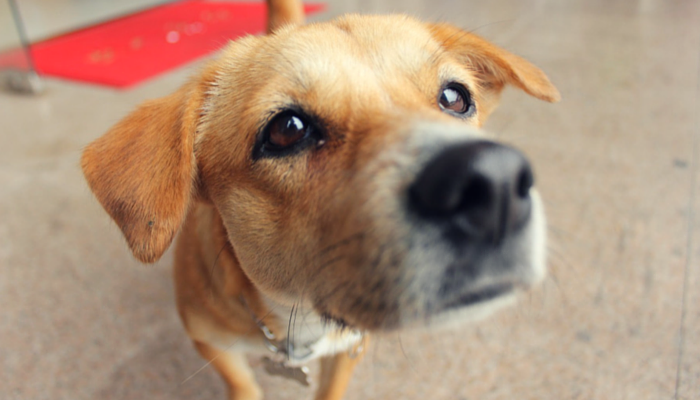
Scent work games are an easy way to keep your dog entertained, even on rainy days.
How to Start With Some Basic Nose Work
When starting out with nose work I recommend staying indoors since it’s a lot less distracting. Your dog should have a good stay command and reliable recall in place before you begin.
You’re also going to teach your dog a command such as “find it” so your dog knows when the nose work game has begun. If you already use “find it” for something different, say having your dog go fetch a specific toy, you may want to come up with a different term specific for nose work.
To start the game have your dog stay at a given location. While he’s watching you go place a bit of food or his favorite toy at the other end of the room. When you give the cue to release your dog tell him to “find it.” After a few repetitions he’ll know what you’re expecting him to do.
Once your dog seems to know “find it” you can step it up a notch. While your dog is in the stay position put the treat or toy out of his line of sight.
The idea with this search activity is to gradually build up to new distances and areas. When first starting out keep the game centered in one or two rooms. If you’re confident that your dog knows the “find it” command it’s time to move onto the next step – hiding things around the house.
Which Hand: The Easiest Nose Work Game
One of the first nose work games you can teach your dog is the which hand game; it’s the simplest method to get your dog used to using his nose rather than eyes.
With a small piece of food or treat on hand put it inside one of your hands and close your fists while your dog is watching. Present your dog with both hands and ask him “which hand?” If your dog doesn’t have great manners and begins to gnaw or scratch at your hand you’ll probably want to work on some impulse control while you’re at it.
Praise him when he lightly nudges, puts his nose on your hand, or paws at the correct hand – whichever behavior you prefer.
If your dog chooses the wrong hand open them up to show him where the treat is. Don’t give him the treat if he chooses the wrong hand, but don’t scold him either. Just close your fists and try again. When he gets it right give him a ton of praise and reward him with the treat. Eventually with simple games like this your dog will begin to start using his natural talent, his nose, rather then relying on visuals.
How to Play the Which Hand Game:
- Put a treat in one of your hands as your dog is watching
- Close your fists and extend both hands out towards your dog
- Ask your dog “which hand?” and wait for them to choose
- If they choose the correct hand praise them like & open your fist to give them the treat
- If they choose the wrong hand open them up to show them & try again
It’s important not to scold or discourage your dog if they choose the wrong hand. The purpose of this game is to encourage your dog to start using their nose rather than eyes, so it’s important to keep the game fun & rewarding
Nose Work Game: Hiding Things Around the House
Even though dogs have a sense of smell 2000 times greater than ours they tend to use their eyes a lot. Nose work games will help them focus on smells. To teach your dog to use his nose instead of visuals you’ll want to start with an object that’s really smelly. Popcorn or smelly treats work well here.
Have your dog sit in his stay position. Place the treat or popcorn around the corner or just slightly out of line of sight and tell your dog to go “find it.” Some dogs dog might get a little frustrated at first if they’re not able to find the treat immediately.
You can encourage and praise him when he’s close, you can even point it out to him if he’s having trouble. You’re aiming to make it fun and exciting for him, so make sure you praise your dog like crazy when he finds it.
When I was teaching my dog this step I would make it easier on her by dragging the object on the floor or making ‘scent pads’ so it was easier for her to track with her nose. As your dog becomes more adept at sniffing things out you can up the challenge. I like to place objects on chairs, under rugs, on the couch or on window sills – anywhere she’s not going to see right away.
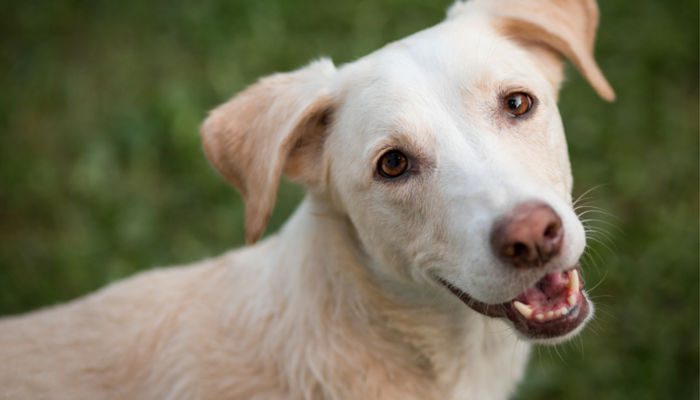
The most important thing to remember when teaching your dog some basic nose work games is to keep it fun. Dogs can get discouraged if they don’t know exactly what you’re expecting them to do; don’t be afraid to help nudge them along in the right direction.
How to Play The Find It Game With Your Dog
The find it game is my favorite nose work game for dogs. It’s the most versatile, and it’s the one my dog enjoy most. And the best part is it’s super easy. All you have to do is pick some treats and hide them around the house.
How to play find it with your dog:
- Pick some smelly treats to have your dog find
- As they’re in the stay position start placing treats around the house
- Place some treats in obvious spots, and some in more challenging locations such as under rugs
- Once you have some treats hidden tell your dog to “find it”
- Encourage them as they run around finding treats
- If they’re missing some you can point or give them clues
To help dogs out when starting this game you can make scent trails for them to follow. You can drag a piece of kibble or dry treat along the floor, making it easier for your dog to smell their way to it. You might want to skip that step if you’re using treats that don’t lend well to dragging such as cheese.
Nose Work Is Extremely Versatile
Basic nose work games are versatile which makes it one of the first activities I’d recommend teaching your dog. It can be done in any environment, with any number of toys or treats. You don’t need to rush out to the store and buy any fancy equipment – and it can be played pretty much anywhere; indoors or out.
When you’ve worked on the basics for a while your dog will begin to develop the ability to better differentiate between smells. You can advance their skill by focusing on one specific toy and having them focus on finding it amongst other items.
Scent work activity is a lot of fun for dogs – it makes them feel useful and productive. Dogs have been bred to work alongside us; they thrive when they’re given tasks to do.
Meaningful play is important to your dog and it helps build a better bond. It’s different than regular game of fetch – it’s mentally stimulating. If you’re looking for more information on the subject check out K9 Nosework.
Here’s a great example of beginning nose work activities:
Looking For More Activities To Play With Your Dog?
If you’re looking for other simple activities to do with your dog check out our big list of quick & easy ways to relieve dog boredom and 33 simple ways to keep your dog busy indoors (without destroying the house).
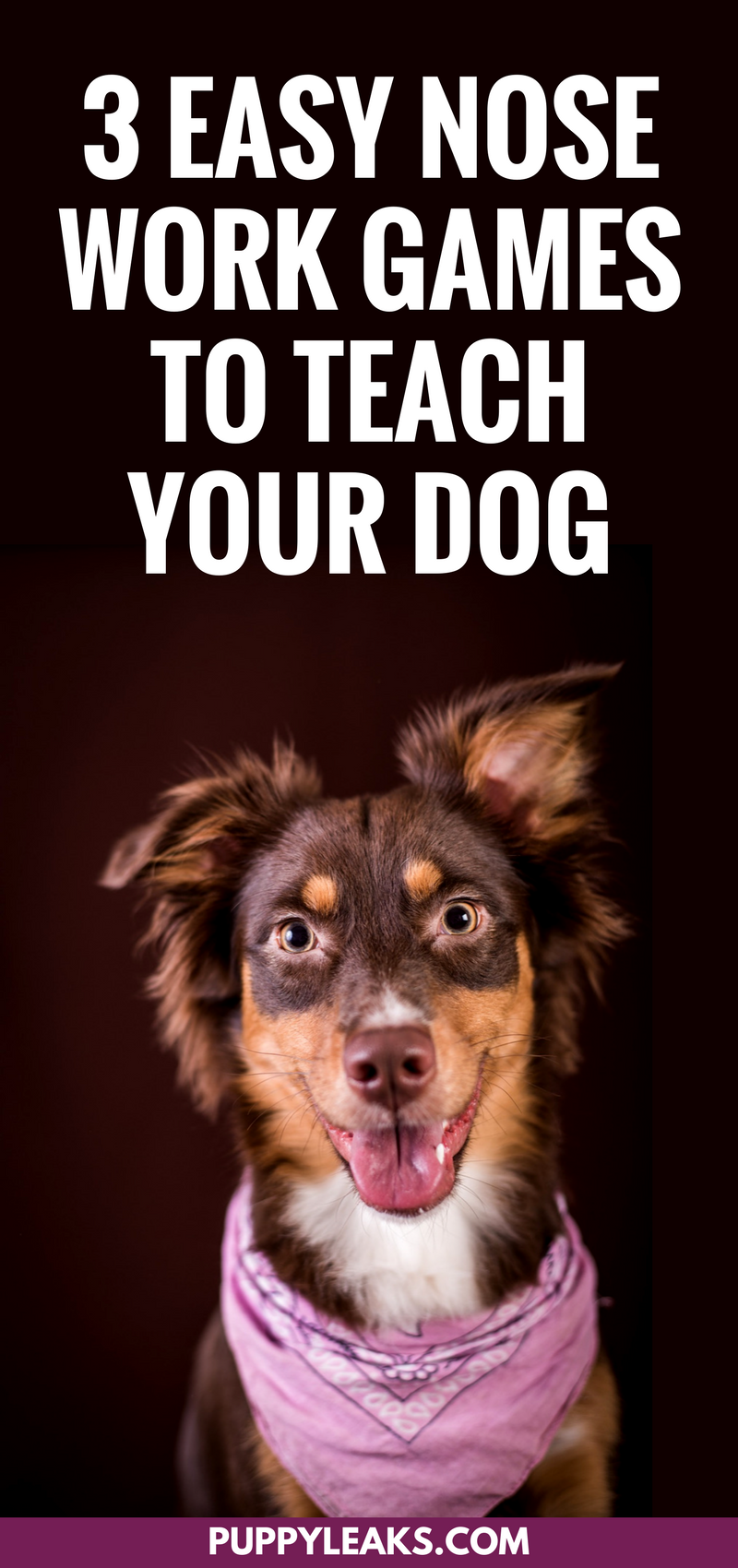
Please share with your friends 🙂
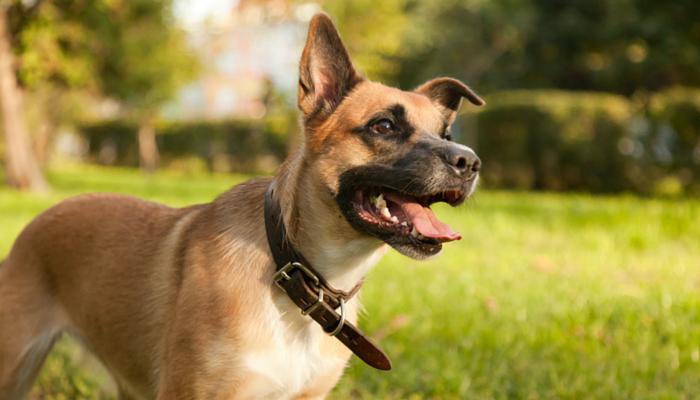
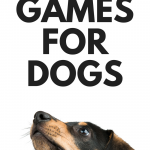
Great post, I love nose work and have started with the game following the steps you mention. My dogs aren’t great at the closed hand thing, but they find treats I hide around the living room for them fairly well. They LOVE it, but I always have the remind them “No Peeking!!” LOL!
Barley loves nosework! I’m getting ready to start with her new little sister, too. Our trainers taught it to us in a way where a good stay/recall isn’t really necessary to get started with the basics, which is good because the new pup is still working on those things but really needs something to work her brain!
Hi Beth,
I was wondering how you hide the treats without having a good stay/recall? I’m asking because we recently adopted a rescue dog that does not really know any commands yet, but loves nosework!
Thanks!
Jan
When we started out Laika’s stay was terrible so I’d enlist my boyfriend for help. He’d hold/distract her as I hid treats around the house.
If you are starting out indoors you can do it a couple ways. The first few times I would put her in her kennel and walk away to do the hiding or my spouse would hold her and I would walk away… then I got her a little house/bed (pretty sure it’s for cats but she loves it) and it became a routine… in the house… lay down… stay… FIND THE SMELL! It’s only been like two weeks but she has FINALLY started to understand the concept of stay and I can walk out of her line of sight for a few seconds and she stays. It’s taken 8 months of her living with us for that to be possible and I credit a lot of that to this “game”.
Good video, other than she says “Go Find” and “Find it”, while training ~ TWO different commands. Did she know she was doing that?
That’s so enlightening,I’ll start it today and sew results, but am certain they will pick it up ASAP…
Great article! Thanks…! just wanted to point out that the dogs’ smell is about 10,000 times better than ours (you mentioned 2,000 times in the article…) Dogs’ sense of smell overpowers our own by orders of magnitude—it’s 10,000 to 100,000 times as acute, scientists say. “Let’s suppose they’re just 10,000 times better,” says James Walker, former director of the Sensory Research Institute at Florida State University.
Great simple games. I have a Yorkie that needs lots of mental stimulation and has a great nose. She thoroughly enjoys any type of scent game.
You can also go to http://www.nacsw.net to learn more about the sport.
It’s a great activity for all dogs but especially for fearful or reactive dogs. Or go to YouTube and search for nosework.
Our dog Jesse does not want to search for anything with a nose. Constantly looking for me through the eyes.
After your advice, I think Jessy will start searching with her nose.
My guy is decent at nose work. Bad at staying once i move a certain distance away. Any tips, other than holding him back? Thanks for the post. Its nice to have these.
Especially for my and my dog 🙂 Very interesting.
At what age can you begin playing scent games and tug with your dog?
These great games bring me and my dog so much joy!
Thanks for sharing!
I’m so glad I found this site. I have a 5 month old hound mix and keeping her entertained and active is a constant struggle. The nose work games are great.